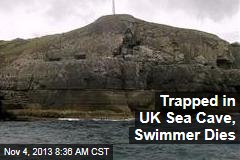Shane Reynolds ( aka Shane O ) goes deep into the Sahara desert to see the Cave of Swimmers (the English Patient) with legendary Egyptian explorer Teymour (T. The remote Cave of Swimmers is located at Wadi Sura in the mountainous Gilf Kebir plateau of the Sahara, in southwest Egypt near the Libyan border. Its name translates as 'the Great Barrier'. Wadi Sora itself is a sheltered inlet within a promontory of the main plateau. Hidden along Cave Creek Trail #4 is a swimming hole deep enough to refresh from the summer heat. It takes almost four miles of hiking in Arizona desert to reach the swimming hole, but the water is refreshing enough to be worth it. Although much of the hike takes place where only cactus will keep you company, the trail does intersect with shaded areas where you can cool off for a bit. Rescue swimmer is a designation given to rescue specialists, most commonly in the service of the military. Rescue swimmers usually are charged with the rescue, assessment, and rendering of medical aid to persons in distress in the sea, on the land, or in the air.
Wikipedia says:'It was discovered in October 1933 by the Hungarian explorer László Almásy. It contains rock painting images of people swimming estimated to have been created 10,000 years ago during the time of the Ice Ages.
Almásy devoted a chapter to the cave in his 1934 book The Unknown Sahara. In it he postulates that the swimming scenes are real depictions of life at the time of painting and that there had been a change in climate since that time. This theory was so new at that time that his first editor added several footnotes, to make it clear that he did not share this opinion.
.jpg)
 The cave is mentioned in the book The English Patient and the film based upon it. The cave shown in the film is not the original but a film set created by a modern artist.'
The cave is mentioned in the book The English Patient and the film based upon it. The cave shown in the film is not the original but a film set created by a modern artist.'More from: http://www.showcaves.com/english/misc/caves/Swimmers.html
'Is it just fiction or a real cave? The Cave of Swimmers has a central place in the movie The English Patient. A cave where prehistoric paintings show swimming people in the middle of the desert. This seems impossible, but there is an easy explanation: this area wasn't a desert some 10.000 years ago during the Ice Ages.
To say it clear: the cave in the film is not the real cave, it is just a film set. The area around the cave is a location in Tunisia, near Degache. The cave interior was painted by an Italian woman painter. She painted the cave, and she is shown painting in the title sequence of the movie.
The real Cave of Swimmers lies in southwest Egypt, at the border to Lybia. It was explored by the real László Almásy: who wrote a book about his discoveries. He also wrote a whole chapter about his archaeological findings, which unfortunately was left out in several editions. He mentions the theory, that there the motives of the drawings were real live scenes of daily life at this place. He explained this with a dramatic change in climate since then. This theory was so new, that his first editor added several footnotes, to make clear that he did not share this opinion. As far as I know, Almásy's book is only available in Hungarian and German.
Cave Of Swimmers Mermaids

Cave Of Swimmers Bandcamp
The discovery of the prehistoric rock painting sites in the Uweinat mountains, was the most important result of the 1933 Almásy expedition. This expedition explored the Uweinat and Gilf Kebir region: Ain Dua, Karkur Talh, and Wadi Sora. Despite he was adviced and promised not to cross the border to Sudan, he did so and discovered several rock paintings in oases over there.Gilf Kebir is a large mountain ridge, which extends over three countries, Egypt, Lybia and Sudan. The mountains consist of sandstones and crystalline rocks, like granite. Sandstone layers are porous which makes them good water reservoirs. They collect rain water and, at low points around the mountains, there are several springs which make small oases. Typically the rocks around the springs get eroded by the water, so each spring forms a sort of cliff or cavern. Most of the erosion happened long ago, when the area had much more rain and the production of the springs was much bigger.
The caverns around the spring were used for shelter by stone age man, and of course they were important, maybe holy places. So they used paint to draw scenes of their daily live on the walls of the shelters. Flint stone tools can also be found, but as far as I know, no scientific excavation was made by now. This kind of caves was found all around Gilf Kebir, most of them at the south western corner in Lybia.
The cave of swimmers has a different geology. It is located in granite, so it is not the place of a spring. But it is located at the bottom of a wadi, a valley which once contained a river. So it is a cave formed by the flowing water at the undercut slope. It is easy to understand, why peolpe would draw swimming people, while sitting at the banks of a river.
A last piece in the puzzle is the question how the paintings remained in the extreme climate of the desert. It seems, the natural pigments of the colours can resist temperatur changes very good. Paintings on certain rocks, where the surface is eroded by temperature changes, are lost forever. But granite is rather resistant. And the last problem is light, especially ultraviolett light, which destroys many colours (bleaching). Almásy: descries the absence of pintings in the part of the cave, which is reached by sunlight. It seems that direct sunlight destroyed the paintings at this place.
 To make one point clear: it is not easy to visit the real cave of swimmers. The geographic and political difficulties make it difficult for the regular tourist. But some tour operators from Egypt organize desert expeditions which include a visit of the cave. You should organize and book such a tour in advance, as you will not find it on the regular day trip schedule in your Hotel...'
To make one point clear: it is not easy to visit the real cave of swimmers. The geographic and political difficulties make it difficult for the regular tourist. But some tour operators from Egypt organize desert expeditions which include a visit of the cave. You should organize and book such a tour in advance, as you will not find it on the regular day trip schedule in your Hotel...'Daniel Cave Swimmer
Lots of pics here.
